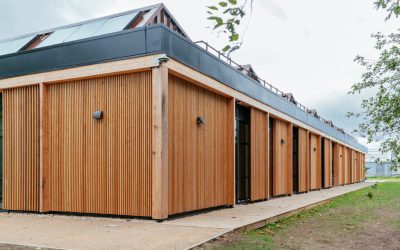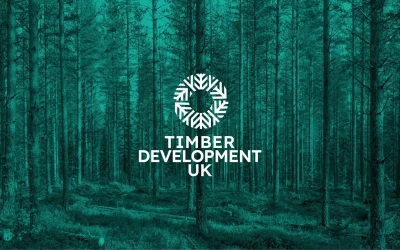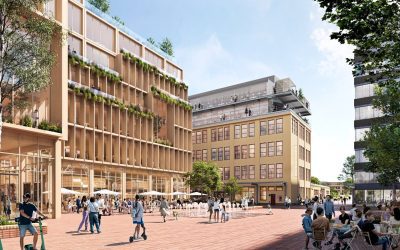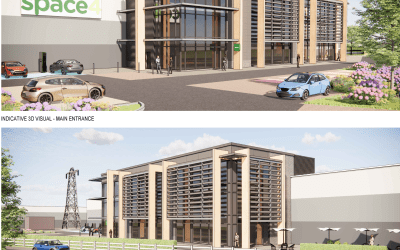Written by Wood Campus
Environmental | Industry | News
Timber Development UK (TDUK) has released average carbon data for the 10 major timber product categories.
The data will support architects, engineers and other specifiers to make accurate assessments of the carbon impacts of their material choices as early in the design process as possible.
TDUK’s new independently verified Embodied Carbon Data for Timber Products calculates weighted average A1-A4 embodied carbon data for common timber products such as softwood, engineered timber, and panel products, including and excluding sequestered carbon. More than 80 EPDs were reviewed in this comprehensive new paper.
A1-A4 data is provided for 10 major timber products which means the EPD Database can be used to calculate the carbon impact of more than 95% of timber consumed in the UK.
The A1-A3 data draws only from EPDs for products available in the UK, with the data weighted based on country of origin.
The data is available to free download from the TDUK website.
“If we are to achieve national and international targets to reach net zero carbon emissions by 2050, we need to measure, understand, and significantly reduce the embodied carbon within the buildings and infrastructure we construct,” said Charlie Law, sustainability director, TDUK, said:
EPDs, he added, were key for specifiers to design low-carbon assets, helping them accurately assess the impact of their designs and material selections,
“Robust data is essential for reducing the carbon impact of construction, allowing specifiers to make informed decisions. We will be updating these figures every year as more data becomes available.”
Seb Laan Lomas, associate and passivhaus designer at Architype, said the data enabled design teams to move beyond “rules-of-thumb” and “gut feelings” to having a data-driven dialogue.
Orginal Article: Timber Trades Journal
More News
Learning Through Timber
The new ‘living lab’ at NMITE will act as a home for Centre of Advanced Timber Technology students to learn more about timber and a net zero approach to building materials.A new purpose built 2,500sqm ‘living lab’ for the New Model Institute for Technology and...
World’s tallest wooden building to be built in Perth after developers win approval
Artist’s impression. Photograph: Elenberg FraserDevelopers say South Perth’s C6 building will be made up of 42% timber and be carbon negative Western Australia is set to become home to the world’s tallest timber building, a “revolutionary” 50-storey hybrid design...
The UK continues to embrace timber-based construction
The UK’s three largest housebuilders (Barratt Developments, Taylor Wimpey, and Persimmon) have announced plans to open dedicated factories for timber-based construction materials. Klober is a roofing accessories provider looking to convince construction companies to...
ARUP – Seven perspectives on the use of timber in building design and construction
ARUP are a global collective of designers, consultants and experts dedicated to sustainable development. We use technology, imagination and rigour to shape a better world. For over 75 years, Arup has been recognised for its vision, talent and tenacity. Dedicated to...
Timber Development UK and Structural Timber Association sign MOU
Timber Development UK (TDUK) and Structural Timber Association (STA) have signed a Memorandum of Understanding (MOU) to help grow and develop the timber construction market. Under the terms of the agreement the two parties have agreed to form a partnership in order to...
Worlds largest wooden city Stockholm
Scandinavian studios Henning Larsen and White Arkitekter are designing Stockholm Wood City, which will become the world's largest mass-timber development and have the "serenity of a forest". Set to be built in the Stockholm neighbourhood of Sickla, the project was...
Data & the Three Pillars of Sustainable Forestry
According to Rolf Schmitz, co-founder and co-CEO of CollectiveCrunch and the creator of Linda Forest software solutions, digitising the world’s forests is essential to understanding and fighting climate change. If a tree falls in the forest, it hardly matters if it...
FSC awareness doubled since pre-lockdown
Awareness of the FSC logo in the UK has increased 45% since 2019[1], and the proportion of those claiming both good and rough knowledge of the logo has more than doubled. With data from the Office for National Statistics revealing that nature had supported people’s...
Persimmon gets green light for timber frame factory
Planning approval has been granted by Charnwood Borough Council for Persimmon to build its new Space4 timber frame factory near Loughborough. The factory is believed to be the biggest of its kind in the UK and will produce timber frame units for up to 7,000 homes a...
BWF research shows homeowners positive over timber
New research from the British Woodworking Federation (BWF) reveals signs that timber windows and doors are viewed positively by homeowners, but that misunderstandings over their performance persist. The survey of 1,500 homeowners unearthed the main factors guiding...











